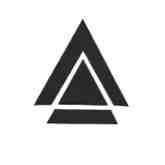**ABOUT US**
Zubair Yousuf, a 28-year-old entrepreneur and Ajrakh artisan residing in Bhuj, Kutch district in Gujarat, learned the craft from his school friend and classmate, Aakib. The star-spangled sky against a bluish-black background is what Ajrakher. While in school, Aakib used to assist his father with his studies. Influenced by Aakib's work, Zubair dropped out of school. At Zubair's uncle's request, Aakib's father agreed to teach Zubair the craft. Zubair worked alongside Aakib and his father for four years before establishing his own business, Europhia Ajrakh, in 2015.
Despite not being from the Khatri community, traditionally associated with Ajrakh work, Zubair learned the craft. Now, along with his six team members, he produces various Ajrakh products such as yardages, sarees, stoles, dupattas, cushion covers, and table linens. Many fellow Ajrakh artisans supported him throughout his journey. Zubair consistently strives to expand his knowledge and business, aiming for global recognition. He has successfully exported his products to foreign countries. His ultimate goal is to pass on the craft by teaching more women artisans.
Ajrakh printing came to kutch around four hundred years ago when Muslim artisans settled in Dhamadka, a village 50kms away from Bhuj, a center for printing fabric. The earthquake that took place in 2001 relentlessly damaged Bhuj, Dhamadka and other towns all over the region. In the rise of this disaster, the artisans who worked on printing fabrics were brought together and a new village was built to rebuild their lives and start with craft production, they named the place Ajarakhpur.
Traditionally Ajrakh printing is exclusively done on both sides of cotton fabric and these days silk is also used. Ajrakh uses complex geometry patterns to create collections in indigo, maroon, and black and white colors. The patterns are inspired by the architectural forms of Islamic architecture’s complicated jali windows and trefoil arches. The Ajrakh coloring is fast and it is carried out in fourteen to sixteen steps of the making process that includes washing, dyeing, printing and drying that requires a high level of a skilled and experienced person to keep colors fast and even.
Ajrakh is also said to signify the universe and the use of color palate is explained so as the color red is used to symbolize the earth, black for darkness, white for clouds and blue for the universe on the whole. The star-spangled sky against a bluish-black background is what Ajrakh means, blue in Arabic as compared.


